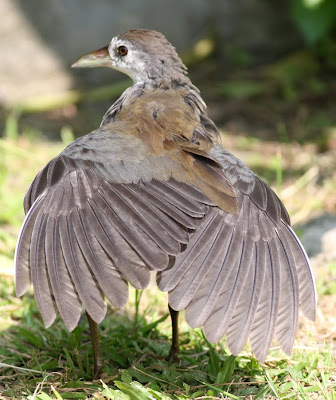
After three weeks enjoying the myriad sublime and ridiculous delights of Japan, we flew south (via the unique maelstrom that is Tokyo) and arrived in Taiwan on the evening of the 8th. Directly into the lion's den of a central Taipei rush hour, within a minute of looking confused we found ourselves instantly assisted by helpful and uber-friendly locals - a constant theme of the entire fortnight in a country which was to earn a very special place in our hearts.


Taiwan Barbet - endemic species #1
After resting up in our hotel - a friendly but somewhat colourful establishment perhaps better known for it's hourly, rather than nightly, rates - we kept it local for our first full day, and ventured onto the (typically reliable, clean, easily navigable) subway to the Botanical Gardens.

Himalayan Black Bulbul (of the endemic Taiwanese subspecies)

Hitting an urban park with at least a scattering of suitably attractive habitats as soon as possible after arrival has been a running theme of the trip, and where new countries (or even continents) are concerned, it can provide the ideal crash course in local avifauna; exhillirating and challenging, but not entirely overwhelming, and with an essential element of acclimatization.


'notoriously shy' White-breasted Waterhens
No surprises, then, that Taipei's Botanical Gardens - in the heart of the city, very popular with locals, and simmering in the humid sub-tropical heat - should deliver plenty of good birding, a fistful of lifers, and even the first on an ad-hoc hit-list of Taiwan endemics.

Chinese Bulbuls - soon to become the one of most annoying species of the trip

Amity was so overcome with talk of potential splits to the Taiwanese bush warblers, she had to sleep it off pronto
(Part two to follow....)




























































